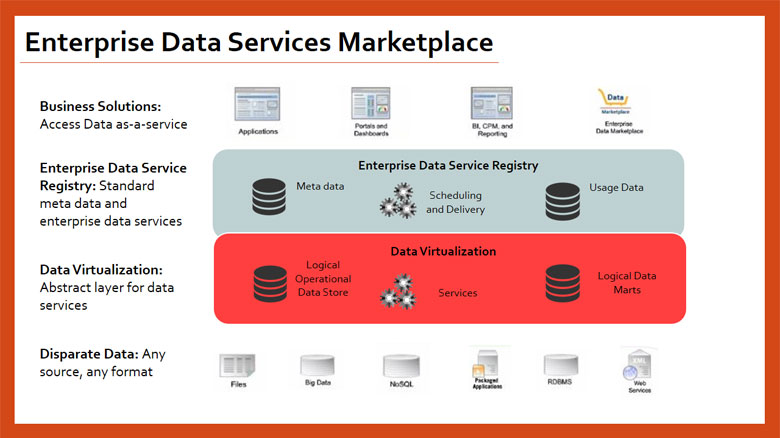
There has been a lot of rhetoric around how data is the new oil and why it is the most critical asset and a resource that an enterprise owns. No doubt, enterprise data, today, is business capital. However making meaningful and efficient use of the current data abundance is still a far cry for enterprises. Data management infrastructures are not in lock-step with the technologies that have created the data glut. Data engineering teams face a lot of challenges with acquiring, combining and consuming the data that arrives in myriads of formats and resides in disparate sources.
What if enterprise data can be consumed by data engineers and application developers the same way music is consumed on iTunes? What if you can build an e-commerce store front for your data and all the reusable data assets? What if you don’t have to physically move or persist data sources? What if you can trace the origins of all your data assets accurately and also study the patterns of how your data is consumed through impact analysis?
All this is possible with a solution that gives you the power to connect, combine and publish data as a service, irrespective of its location and format.
Build your Enterprise Data Services Marketplace with Data Virtualization
You can build your own enterprise data marketplace by creating a data services abstraction layer. Data virtualization can be used to support this marketplace with real-time data services, provision non real-time data into Hadoop, and swap underlying sources without affecting business users. The data services marketplace provides a certified, e-commerce storefront and repository. This provides data consumers a shopping experience to procure data for building enterprise applications for transactional and reporting needs.
Data virtualization provides a virtual, abstraction layer to bring together all internal and external data assets into a central one stop location. With data virtualization, you can rapidly develop and deploy and deliver data services. A consuming application or a system can access the data service in the manner that is best for them. For example, a reporting tool can access the data service using an ODBC connection and an ESB can access the same service (and same data) using a SOAP/XML Web service. Some advanced capabilities such as caching and push down optimization offered by some data virtualization vendors in the market justify the development, deployment and consumption of data services.
Why should you create an Enterprise Data Services Marketplace?
The following are some of the benefits and advantages of creating an Enterprise Data Services Marketplace:
- Data as a Service to deliver a variety of data, applications and analytics, by combining the Enterprise Data Marketplace with data virtualization.
- Data virtualization layer enables consistent and standardized, enterprise data services for data consumers.
- Agility, Flexibility and Reuse since each data service can be developed, deployed and modified as an independent, stand-alone entity.
- Minimum impact from changes to underlying data since data services and data consumers are loosely coupled with the data virtualization layer as a buffer.
- Time-to-Value from significant reduction in ETL and service development with delivery timeframes reduced from weeks to days or hours using data virtualization.
- Simplicity of integrating disparate structured and unstructured sources to expose data as consumable services.
- Control through Governance of the data services at the data virtualization layer.
For an in-depth look at how the data services marketplace is enabled by Data virtualization and how it supports the rapid development of operational applications and single data view portals, plan on attending the Educational Seminar on Logical Data Warehouse, Data Lakes, and Data Services Marketplace. Learn services-based reference architecture, modality, and latency of data access.
- Capitalize on the Enterprise Data Services Marketplace - May 24, 2016
- Stop Searching Heaven and Earth for Data - May 9, 2016
- Drinking from the fire hose of Fast Data? - March 21, 2016

